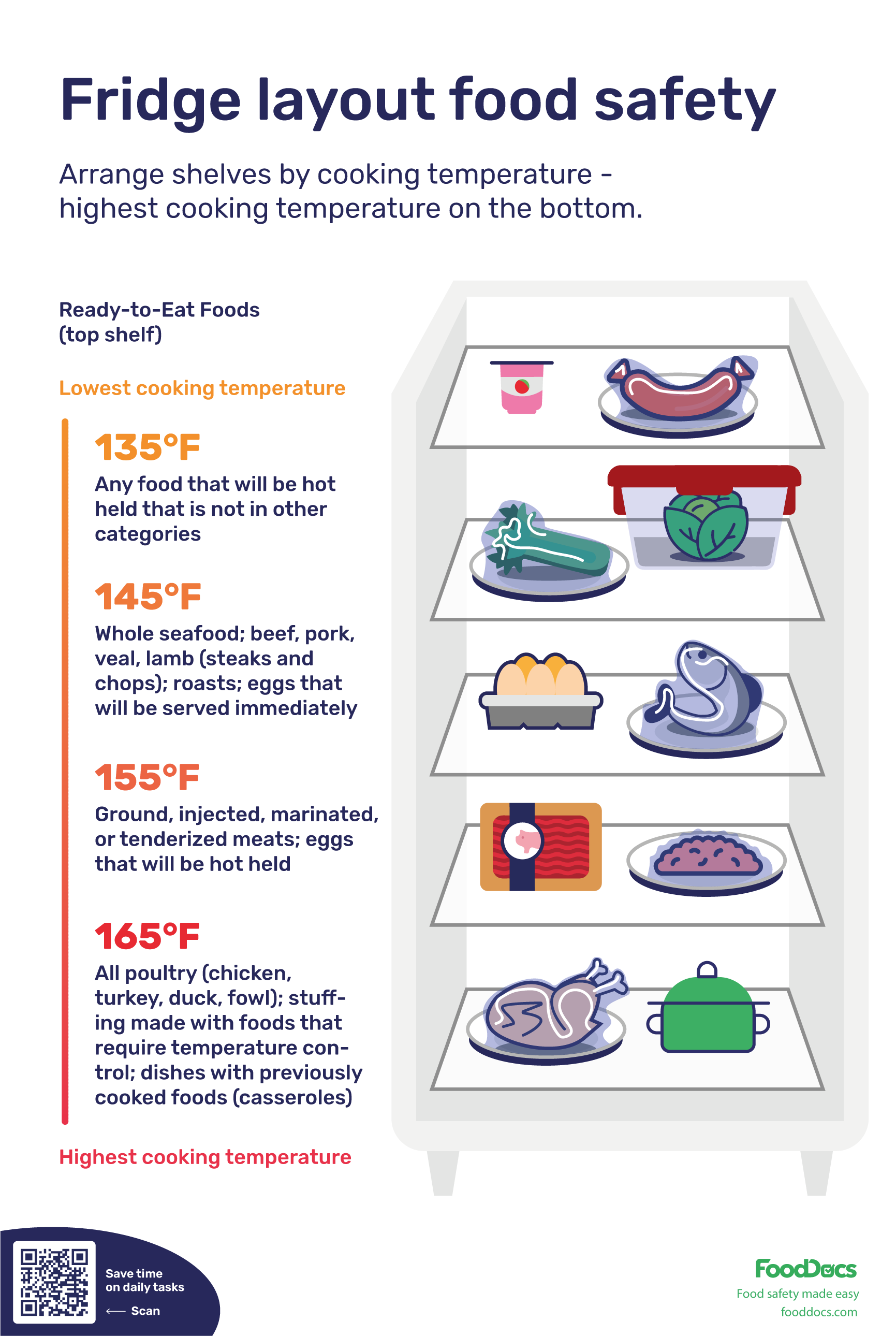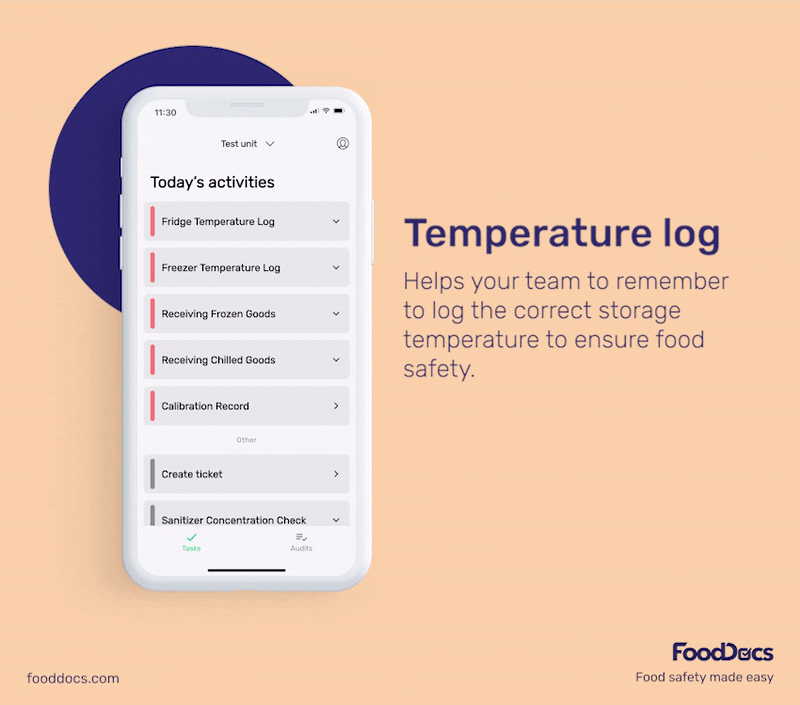Why Is Food Safety Important In Healthcare? Healthcare Leaders Guide
Learn challenges healthcare foodservice teams face today and key food safety practices to protect vulnerable patients. Get a free healthcare leader...
If you're looking for a quick guide to freeze-drying food, you're in the right place.
Also called lyophilization, freeze-drying is a way of removing water from food. The process involves freezing the food and then turning the ice into vapor without it becoming liquid. This method keeps the food's nutritional value, flavor, and texture intact.
If you want learn how to freeze dry food, keep reading.
Below, you’ll find the three simple steps to freeze-drying food. After you understand the basics, read on for detailed answers to common freeze-drying food questions.
The freeze-drying process involves three steps: freezing, primary drying (also called proper freeze-drying), and secondary drying (also called desorption drying). Here are more details about each step:
Begin by rapidly freezing the food under atmospheric pressure. The food is chilled to very low temperatures, ranging between -30 and -50 degrees Fahrenheit.
The rapid process ensures that the water molecules inside the food form solid ice crystals without damaging the food’s structure.
This is the sublimation step, where the frozen food is exposed to mild heat while in a vacuum chamber. This allows the ice crystals to transition directly from solid to gas (water vapor), bypassing the liquid state. The water vapor is then removed by a vacuum pump.
This step removes up to 90% of the water content from the food but takes a long time. Only mild heat is applied to ensure the food retains its molecular structure and does not lose nutrients. The temperature at this stage is not enough to kill illness-causing bacteria in the food items.
Any remaining water is removed through a process called desorption drying. The food is exposed to temperatures higher than those used in the primary drying phase, breaking the bonds between the food and ionically bonded water molecules.
This dehydration process lowers the food's water content by an additional 1-2%. After the freeze-drying process is complete, the vacuum environment is broken using an inert gas before the food material is sealed.
At this point, the food becomes highly porous and can be easily rehydrated by adding water.
Freeze-drying food won’t be of much help if you don’t store it properly. You want to keep light, moisture, and oxygen away from freeze-dried food to ensure maximum shelf life. Here are five tips to help you do that:
Mylar bags are excellent for long-term storage of freeze-dried food. They are multilayer, metalized, and sealable, meaning they block out air, light, and moisture—the three key elements that degrade food. Mylar bags can also be resealed when opened and take up less space than cans or glass jars.
Consider storing Mylar bags in airtight containers or bins, so they remain safe from pests or physical damage.
Pair your Mylar or vacuum-sealed bags with oxygen absorbers. These are single-use packages filled with iron powder that absorb oxygen and moisture from the sealed container, preventing spoilage, discoloration, and the growth of bacteria and fungi on the food.
A study on the shelf-life of bread found that using oxygen absorbers decreased the “concentration of oxygen to below 0.1% within a few days of packaging”, drastically slowing down food spoilage.
You also want to ensure you use the correct size of oxygen absorber based on the volume you're storing. As a rule of thumb, use 300-500cc of oxygen absorber per gallon of stored food.

You want to store freeze-dried food in a cool, dry, and dark place. Pantries, basements, and storage shelves are good locations because they typically do not get a lot of light or moisture.
Temperature is also an important factor—higher temperatures quicken food spoilage, so ensure your storage location is away from sunlight, the stove, or other heat sources. Find a spot with temperatures below 70°F (21°C) for optimal preservation.
Keep track of your freeze-dried food using detailed labeling. Once you’ve sealed a container or Mylar bag, label each package with the contents and the date of sealing so you can monitor how long it has been stored.
You should implement the First In, First Out method—food that got stored the earliest should be used up first. This ensures older food is consumed before its shelf life expires, reducing the chances of contamination and wastage.
Even though freeze-dried food is extremely shelf stable, it’s still important to check for signs of spoilage. Here are some tips to check if freeze-dried food has spoiled:
You should also regularly inspect your storage area for signs of moisture buildup, leaks, or temperature fluctuations.
Don't forget to inspect the storage bags. If you notice any holes, tears, or signs of pests such as gnaw marks or droppings, your stored food may be compromised.
Freeze-drying food typically takes between 20 and 40 hours. This varies depending on the type of food you want to freeze. According to various sources, items like beef, corn, or asparagus take anywhere from 25-35 hours to freeze-dry, while fruits with higher water content like pineapple and grapes take 41-52 hours.


Thank you for downloading Food product specification sheet!
Want to get a customizable HACCP template?
Or set up your food safety system in 15 minutes?
Freeze-dried food can last between 25 and 30 years when stored in ideal conditions, thanks to the removal of 98-99% of its moisture content during the freeze-drying process.
However, this is only an estimate—the exact shelf-life of your freeze-dried food depends on storage conditions and exposure to light, moisture, oxygen, and heat.
The food content is also an important consideration. High-fat or oily foods (such as nuts or dairy items) have a shorter shelf life—usually around 10 years—even after freeze-drying. That's because these foods oxidize and go rancid faster.
Without oxygen absorbers, the shelf of freeze-dried food may be drastically reduced because oxygen causes food to degrade much faster.
While the exact timeline varies, freeze-dried food without oxygen absorbers may last for only several months to a few years before quality begins to deteriorate.
After being opened, most freeze-dried food items last for 6-12 months. The exact duration will depend on the food contents, storage conditions, and exposure to heat, light, oxygen, and moisture.
Freeze-dried food is food that has been dehydrated. Also known as lyophilization, the freeze-drying process first freezes food and then dries it under pressure to remove its water content.
Freeze-drying was invented in 1906 by the French physicist Jacques-Arsène d'Arsonval. He pioneered the first model of a freeze-dryer using a vacuum pump to remove air from a chamber and subliming ice using heat.
His model was adopted by the pharmaceutical company S.M. Jones in the 1930s, which created the first commercial freeze dryer. This freeze dryer quickly became popular during World War II for preserving blood serum.
Today, freeze-dried food is used by astronauts, campers, backpackers, food manufacturers, and militaries.
The benefits of freeze-dried food include good nutrient retention, prolonged shelf life, easy storage, preserved taste and texture, and reduced food waste. Here are more details about each benefit:
Since freeze-drying involves low temperatures, it retains about 97% of the food’s nutrients, significantly higher than other methods like canning and dehydrating.
Studies have shown that freeze-drying is particularly effective for preserving antioxidants like anthocyanins, flavonoids, and vitamin C.
For example, a study by Kamiloglu et al. reported that the vitamin C content of certain fruits remained nearly unchanged after 48–72 hours of freeze-drying. In some fruits (carrots, muskmelon, and peaches), freeze-drying even tripled the ascorbic acid content.
No, while some nutrient loss is inevitable, freeze-drying preserves nutrients far better than other methods. It helps retain most essential vitamins and bioactive compounds (especially antioxidants and vitamin C), as well as protein, fiber, and phenolics.
With proper storage, freeze-dried food easily lasts for up to 20 years, making it ideal for long-term food storage.
Since freeze-drying removes nearly all water content, it protects food from the main causes of spoilage—moisture, oxidation, and microbial growth.
Decreased moisture content inhibits the growth of bacteria, yeasts, or mold, keeping food fresh for decades.
Since freeze-drying removes up to 98% of moisture from food, it makes food lightweight and compact.
This makes freeze-dried food ideal for easy storage in emergencies as well as for storage by backpackers, campers, military personnel, and astronauts, all of which are short on space.
Multiple studies have shown that freeze-dried food retains nearly all of its original color, flavor, and textural properties.
For instance, Kamiloglu et al. reported that freeze-dried food remained superior in terms of nutritional and sensory quality compared to other drying methods like dehydration, air drying, or sun drying.
Freeze-drying helps businesses minimize food waste by freezing surplus food before it spoils, extending the food’s shelf life for years. It also helps reduce the overall food cost and supports sustainability in food practices.
Businesses also freeze-dry seasonal food items when they are cheap and easily available, ensuring they remain in stock all year round.
Although freeze-drying has numerous benefits, it also comes with important limitations that you should keep in mind. For example, the process takes a long time and is cost-intensive. You also can’t freeze-dry all food types. Here are more details about the limitations of freeze-drying food:
Freeze-drying requires a high initial investment, especially for industrial units, which cost anywhere between $9000 and $100,000.
Freeze-drying machines also require precise temperature and pressure control, which increases the equipment maintenance expenses.
Freeze-drying is also energy-intensive. Even small household models consume between 990 to 1500 watts per hour.
Plus, you will need to invest in proper storage units and supplies, including airtight containers, Mylar bags, and oxygen absorbers, which further drive up the costs of the freeze-drying process.
Freeze-drying involves multiple stages and takes anywhere from 20 to 48 hours to complete. This can be a significant drawback when compared to other drying methods like dehydration, which usually take only 4-10 hours.
Freeze-dried food has complex storage requirements. It must be stored in airtight containers, away from light, moisture, and air. Without proper storage, the food absorbs moisture from the environment, leading to spoilage and a loss of texture and flavor over time.
Since spoiled products must be discarded, improper storage of freeze-dried food results in significant losses for businesses, including wasted inventory and equipment costs.
Although freeze-drying preserves nutrients at the outset, there is still gradual nutrient degradation over time, particularly when it comes to vitamins. Research shows that freeze-dried food loses some of its essential nutrients over time, even with proper storage conditions.
For example, vitamin C, a nutrient highly sensitive to light and air, can experience significant losses. Marques et al. found that the retention rate for vitamin C in tropical fruits varied between 30% to 97% after freeze-drying. Similarly, Araya-Farias et al. reported that vitamin C content in freeze-dried tropical fruits decreased by 20% over time, while vitamin E content decreased by 35%.
Not all food items are suitable for freeze-drying. Foods with high-fat content like butter or fatty meats do not freeze-dry well and could turn rancid.
This is because fat is more prone to oxidation, a process where fats degrade when exposed to oxygen, light, or heat, causing them to spoil quickly.
Examples of foods that cannot be freeze-dried include:
Without the ability to quickly and accurately monitor food temperatures, freeze drying can become a much riskier food preservation method.
FoodDocs' Food Safety Management software will help you safely monitor the freeze drying process and easily trace batches of freeze dried foods.
It makes monitoring temperatures — cold, ambient, and hot — more easy and accurate. The food safety monitoring system also includes cleaning checklists (for freeze drying equipment), traceability logs, and more!

You'll also benefit from:
Digitize your food safety system with FoodDocs and start your 14-day free trial today.
Yes, there is immense potential in the freeze-drying food business. The global freeze-dried food market value is estimated to be $30.4 billion in 2024.
Freeze-drying is most commonly used in the pharmaceutical, nutraceuticals, food processing, pet food, cosmetics, chemical, and catering industries.
Freeze-drying does not use preservatives or heat and retains nearly all of the food’s nutritional content. This makes it the healthiest option for long-term food storage.
To sell freeze-dried food, you’ll need a Food Sales Retail License, a Food Handler’s License, and a Cannery License in some states.
FoodDocs is a customizable Food Safety Management System that helps you stay compliant with food safety regulations and obtain necessary certifications and licenses for your freeze-dried food business.
A commercial freeze-dryer costs anywhere from $7500 to upwards of $15,000. Other costs like electrical work, plumbing, installation, and maintenance costs can further drive up the price of freeze-drying food.
No, dehydrating and freeze-drying both remove moisture content from food but involve different methods and yield different results.
Dehydration uses hot airflow, which can alter the texture and taste of food and lower its nutritional content.
Freeze-drying, on the other hand, relies on cold temperatures and sublimation, preserving most of the food’s nutrients, flavor, and structure.
Rehydrating freeze-dried food is simple—all you need to do is add water to the dehydrated food.
If the food was freeze-dried fully cooked, rehydrate with warm or hot water. If it was put in the dryer raw, rehydrate with cold water.
Make sure to rehydrate in intervals, using either a spray bottle or pouring water slowly with a kettle to ensure you don’t over-hydrate the food.
Learn challenges healthcare foodservice teams face today and key food safety practices to protect vulnerable patients. Get a free healthcare leader...
Learn what Standard Operating Procedures (SOPs) are and how to write effective SOPs that ensure consistency, efficiency, and safety in your...
Boost your retail food safety with essential practices and digital tools to protect customers and your brand. Plus a free Retail Food Safety Leader...